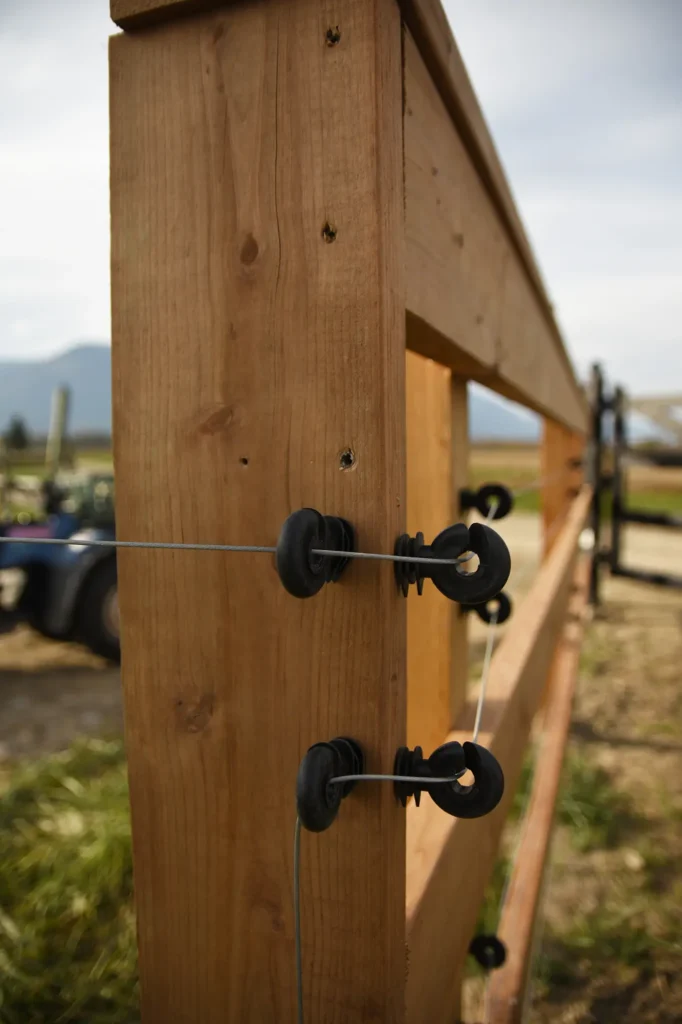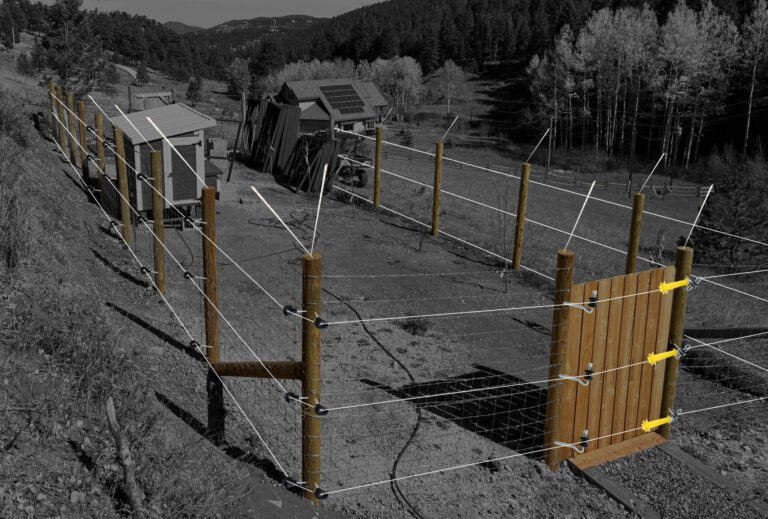“Electric Fencing for a cabin?” As the weather cools down, you’re likely not considering installing bear fencing. If you are a cottage owner, trapper, or outfitter with a cabin, however, it is strongly recommended you consider bear fencing to protect your assets. If you’re not careful, your cabin might receive a visit from an uninvited guest while you’re away.
Bears search for food with their nose and your cabin is filled with attractants. Not only will they search for leftover food, they are also attracted to garbage, waste-water, household chemicals, motor-oil, almost anything with a smelly or pungent aroma.
At this time of year, bears are packing in as many calories as possible, up to 20,000 per day in preparation for the winter. Bears are muscular critters and they can easily break through doors, windows, and even plywood cabin walls to get to that food source. And once a bear is rewarded with food, they’ll keep coming back to your cabin year after year.

How to Prevent Damage with Bear Fencing
Luckily, with a little prevention work, you can keep bears searching for wild food out of your cabin.
Electric bear fencing is one of the best solutions to prevent cabin damage. You can install the fence directly on your cabin to protect the control area when you’re not around. Electric fences deliver a painful, but harmless shock that teaches bears to avoid your cabin. By targeting behavioural changes and creating a “landscape of fear”, bears will learn that your cabin as off limits.
Follow these simple principles for your bear fencing:
Think like a bear: You want a bear to contact the positive (charged) wire before it has a chance to cause any damage. Install wire anywhere you think a bear is likely to gain access – you’ll want to protect every window and door, and string at least one wire along the wall.

Energizers:
Electric fence energizers send short, safe, but strong electric pulses through the fence. If your cabin’s power supply will remain active choose and AC-powered charger. If not, a solar powered system will keep the fence active as long as you have sunlight reaching the panel. Our solar energizers use AGM frost-proof batteries are designed to remain active in cold temperatures. The fence energizer should be producing at least 7,000 volts along all points of the cabin wrap to be effective.
Bear fencing sends a shock when the bear grazes the electric circuit, often done via the ground (earth) and a 6 inch ground rod driven into the soil. Grounding is one of the most important components in an electric fence, always use bonafide ground rods. If a section of the electrified wire passes over insulated ground material – like a wooden deck – you’ll need to place a negative wire connected directly to the negative about 6 to 8 inches away from the positive wire.

Wire Selection:
Most importantly, the wire needs to be tight to ensure bears receive a strong shock to their skin. Baygard Polywire is high-visibility and easy to work with for seasonal installations. Galvanized Steel Wire is an excellent choice for more permanent installations.
Insulators:
You’ll need to keep your electrified wire away from any other material, including your cabin. Electric fence insulators can be screwed right onto wood for easy installation.
It might seem intimidating at first, but installing bear fencing is not difficult. With a little planning and execution, you can protect your cabin all year round.
Visit our Fence Hub to learn all about fencing.

Introducing
Margo Fence Hub
We want to share our expertise with you. Margo Fence Hub is your resource for anything related to electric fencing. From planning to installation, we have compiled various educational resources to help you create an effective electric fence system.





